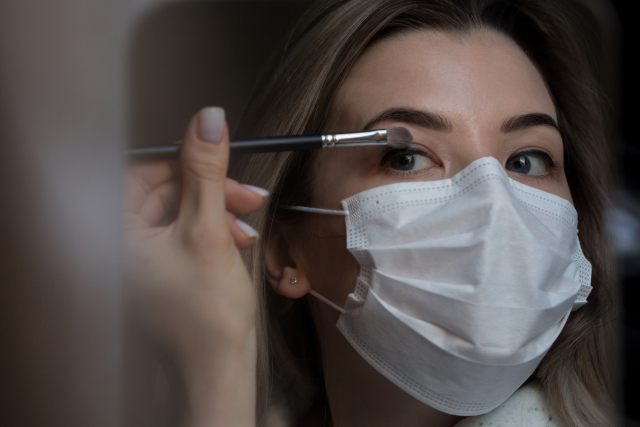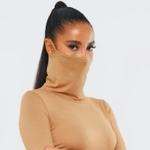
Face masks have now been made mandatory in enclosed spaces in many countries worldwide. They must even be worn outdoors in cities that are particularly affected by COVID-19 infections. Mask-wearing has shaken up many aspects of our daily lives, right down to our beauty regimes. From makeup to facial care and product textures, not to mention acne-zapping products, here’s a look at some of the changes face masks are bringing to your bathroom and your makeup bag, all in spite of the latest trends.
No makeup: From dream to reality
While plenty of celebrities, such as Alicia Keys, embraced the no makeup face well before the global pandemic, lockdown has changed the game profoundly, offering people a real opportunity to accept themselves without makeup.
A global trend has visibly transcended borders given the proliferation of hashtags like “#nomakeup”, “#nomakeupday”, “#nomakeupchallenge” or “#nomakeupselfie” that have swamped social media this year, all accompanied by pictures showing the world that self-acceptance is more than just a theory today.
This analysis is reinforced by mask-wearing, which isn not particularly compatible with wearing makeup. As well as hiding carefully made-up faces, masks cause foundation and lipstick to rub-off in a few minutes and can increase the risk of blemishes.
Those are three good reasons that have led many women to banish makeup from their beauty routines. In fact, a poll of 3,018 people carried out by Ifop for the Slow Cosmétique label back in June revealed that 21% of French women surveyed reported wearing makeup every day at the end of lockdown, compared to 42% in 2017. This drop suggests that major changes are afoot in women’s beauty habits.
New boom: mascaras and transfer-resistant products
Even those who are not (yet) fully onboard the “no makeup” movement have seen their habits change. This is again reflected in the Ifop survey for Slow Cosmétique, which showed women who regularly wear makeup are now paying more attention to their eyes, rather than skin and, in particular, lips. The reason, as mentioned, is not only that it is not seen, but also that it simply does not stay on due to the rubbing of the mask, causing transfer.
This observation is supported by sales and searches for these products online, which confirm the current appetite for mascaras, eyeliners and eyebrow products to the detriment of lipsticks and facial products. Interestingly, these products were all the rage before the public health crisis hit, notably driven by trends for contouring, highlighting, baking and the generally sculpted look.
While many women have given up on lipstick and facial products, others are favoring more specific products, making way for a new trend: the boom of transfer-proof formulations. Brands have been offering such products for several weeks, responding to growing demand from makeup fans who do not want to give in to the mask.
Originally developed to stop lipstick from transferring during a meal, when sipping a drink or giving a kiss, these products now seem like the ideal solution for mask-wearing times. Note that lightweight formulations and setting products like powders are also prime choices to overcome the inconvenience of mask-wearing.
‘Maskne’ and other skin blemishes
You have no doubt already heard of “mascne” or “maskne”, acne from wearing face masks, which has become a problem since mask-wearing was made mandatory. These blemishes are caused by the rubbing of the mask and the elastic straps, as well as by the fact that facial coverings stop the skin from breathing.
It is a problem that can affect anyone, at any age, even if people with blemish-prone skin are more susceptible to the problem, and can require a few tweaks to beauty regimes. Before reaching for any kind of product to treat maskne, start by setting and sticking to a few day-to-day ground rules. For example, favor fabric masks, which are more breathable than surgical varieties, and change your mask several times a day.
When it comes to beauty routines, the usual techniques should be reinforced: removing makeup and cleansing the skin are now non-negotiable at the end of a day in a mask. Next, treat skin with a suitable skincare product and hydrate skin every morning before putting your mask back on.
It is a good idea to use more lightweight textures than usual and to look for non-comedogenic products to reduce the risk of spots, redness and other blemishes. Note that foundation can contribute to preventing skin from breathing too. It may be better to reduce the use of this product if you do not want to end up dealing with acne. CC
RELATED STORIES:
Creative Diaries: A quarantine diary by celebrity makeup artist Mayesa Delos Santos
In coronavirus pandemic, ‘lipstick effect’ gives way to ‘eyeliner effect’


